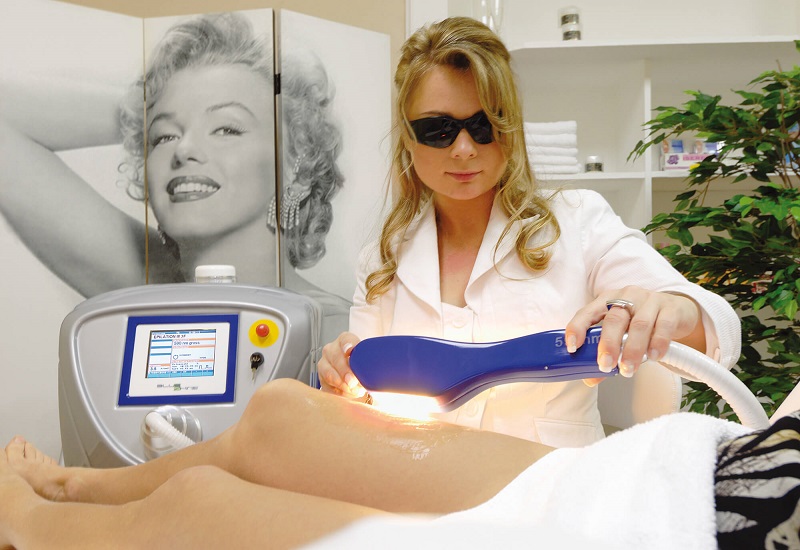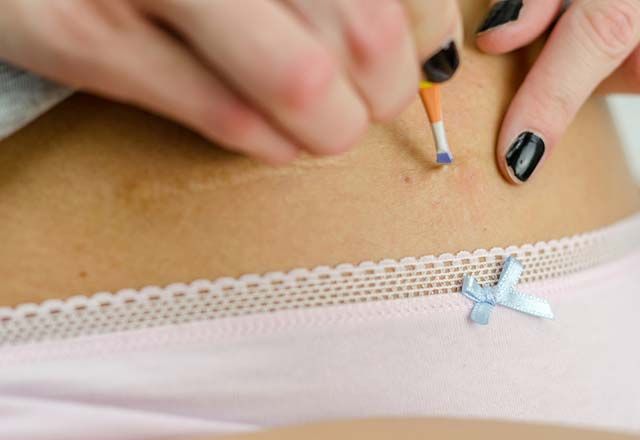Ingrown hairs are a benign skin condition that typically affects teens and adults. The issue arises when a hair grows back into the hair follicle, instead of growing up and out. While most ingrown hairs are little cause for concern and will typically resolve without treatment in a few days or weeks, knowing how to remove ingrown hair effectively can expedite the process and prevent more complex concerns. Use these tips to safely remedy ingrown hair.
Medicine and Professional Treatments
1. Tretinoin
[amazon bestseller=”tretinoin” items=”2″]
In some cases, consulting a doctor or dermatologist can help expedite the process of dealing with ingrown hairs. One of the first suggestions your doctor will likely have is tretinoin or Retin A. This cream helps to decrease the plugging of the skin and may also thin the outer layer of the skin, decreasing your risk of ingrown hairs and reducing your healing time when you do develop one.
2. Corticosteroid Cream
Your doctor may also suggest a topical corticosteroid. This treatment will reduce inflammation in the skin and give the hair more room to begin growing normally again.
3. Antibiotics
If you experience a severe case, you may need an antibiotic for how to remove ingrown hair. This level of treatment is typically only required when pustules or abscesses, a secondary infection, form within the follicle. Your doctor may prescribe topical antibiotics such as erythromycin or clindamycin and a topical antibacterial agent. This combination reduces the growth of skin bacteria and treats the secondary infection, allowing the skin to heal and the hair to begin growing outward again.
[amazon bestseller=”antibiotics” items=”2″]
4. Laser Hair Removal

If you are someone who frequently experiences ingrown hairs, then laser hair removal may be a viable option for how to remove ingrown hair. This treatment can actually be used over an area to permanently remove unwanted hair and decrease your risk of developing ingrown hairs. The method currently only works on dark hair, but it is fast and safe.
5. Electrolysis
Electrolysis is another option to permanently remove hair. This specific procedure can be used to target individual follicles and is effective on any color of hair or skin. The process is often tedious and requires multiple treatments, but when it is finished, the treated hair follicles are destroyed permanently, meaning you’ll no longer have to worry about ingrown hairs.
Home Remedies
In many cases, ingrown hairs can safely and effectively be removed using home remedies. Use these tips for how to remove ingrown hair at home if the issue has not progressed, and you are looking for an initial treatment option.
6. Warm Compresses
Depending on the depth of the hair, you may be able to soften the skin enough with warm compresses to extract the hair. This treatment generally works best when you can see the hair embedded in the skin; however, it can also be used in some cases to draw the hair closer to the surface to make extraction easier.
- Use a clean cloth and wet it with hot water.
- Wring out the excess, and then press the cloth to your skin where the hair is located.
- Leave the compress on until it cools, and then repeat the process.
If you’ve repeated this application for 10 or more minutes with no improvement, then you’ll need to look for a different removal method and/or make sure that the issue really is an ingrown hair.
7. Tweezers

One of the simplest removal methods involves using tweezers or another sharp device to gently ease the hair out of the skin. However, it is important that you follow a few key steps to make sure you are able to remove the entire hair to prevent future ingrown hairs:
- Begin by placing a warm compress on the skin to open the pore and move the hair to the surface. Avoid digging into the skin to get to the hair, as this can cause damage. Likewise, don’t pluck the hair from the follicle entirely.
- Instead, use the tweezers to gently coax the hair up and outward so that it can resume growing normally. For the best results, use a pointy-tipped set of tweezers, as these will cause less damage to the surrounding skin than a flat-tipped set. Also, if necessary, you can use a needle to get the end of the hair loose.
This method is typically done most easily when you are able to see a loop of the hair close to the surface of your skin.
8. Egg Membrane
An egg membrane functions to pull the hair out of the skin and resolve the issue with very little damage to the surrounding skin. With this method, you’ll simply:
- Crack on egg and remove the membrane from the inside of the shell.
- Apply the membrane over the ingrown hair.
- Allow it time to dry and shrink over the area, and then slowly peel the membrane off once it has dried.
The hair should come out as you pull the membrane off of your skin.
9. Benzoyl Peroxide
Particularly if the hair is accompanied by pus, ingrown hairs are relatively similar to pimples and other skin issues. As such, they often respond to acne treatments, like benzoyl peroxide or salicylic acid.
[amazon bestseller=”benzoyl peroxide” items=”2″]
- Gently exfoliate the surrounding skin.
- Apply the benzoyl peroxide or salicylic acid to the affected area several times a day.
These measures should reduce the swelling in the skin and provide the hair with the room it needs to grow outward.
Summing Up
Although somewhat tedious, treating ingrown hairs is generally safe and effective. It is important to be as gentle as possible to avoid any further damage to the surrounding skin and follicle, but with the above methods for how to remove ingrown hair, you should be able to successfully remedy the issue. However, it’s always best to prevent ingrown hair than to treat the condition, so keep this in mind.
If you are unable to treat the issue at home, experience several ingrown hairs over your body, or notice an infection in any of the hairs, consult your doctor for additional treatment options.
